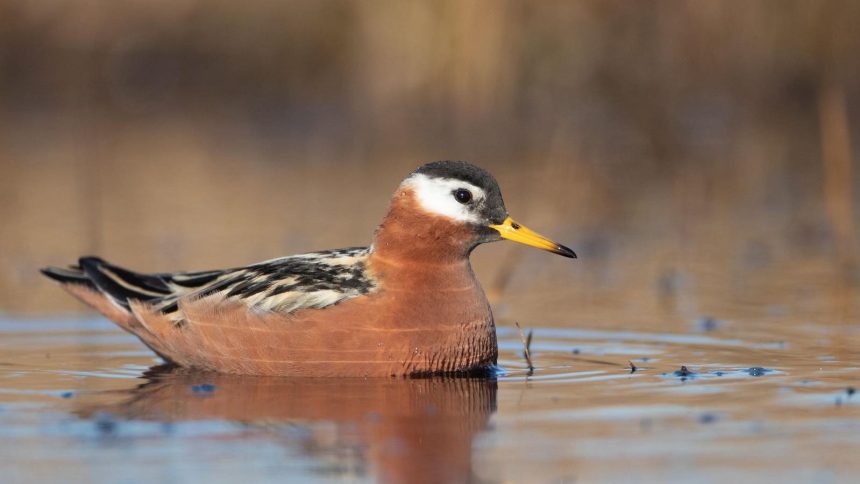The Overlooked Half: How Ignoring Female Birds Hinders Conservation Efforts
For too long, the study of birds, their behaviors, and their conservation needs has suffered from a significant blind spot: the female. Ornithologists, conservation biologists, and even amateur birdwatchers have often focused their attention on the more visually striking males, leaving the lives and unique ecological roles of females largely unexplored. This bias, as highlighted by Joanna Wu and her collaborators in a recent study, has profound implications for our understanding of avian biology and our ability to effectively protect bird populations. Their research underscores the urgent need for a more inclusive approach to ornithology, one that recognizes the distinct contributions and vulnerabilities of female birds.
The pervasiveness of this male-centric view is evident in several areas of avian research. Studies of birdsong, for example, have traditionally focused on the elaborate melodies produced by males in temperate regions, neglecting the diverse vocalizations of females, particularly in tropical and southern hemisphere species where both sexes often sing. This skewed perspective overlooks the crucial role of female song in communication, mate attraction, and territorial defense. Furthermore, it reinforces outdated assumptions about the division of labor in bird species, where males are often portrayed as the primary singers and females relegated to more passive roles. Wu’s research challenges these assumptions, revealing that female song is likely the ancestral state in the majority of bird species and plays a much more significant role than previously acknowledged.
Beyond birdsong, the bias extends to other aspects of avian life history. Traditional narratives often depict males as the primary providers and protectors, while females are viewed solely as caregivers. However, Wu and her colleagues point out that in many species, both sexes participate in incubation and raising offspring, challenging these simplistic portrayals. The underrepresentation of female-dominant species, such as certain shorebirds and raptors, further perpetuates this skewed perspective, hindering our understanding of the diverse social structures and behaviors within the avian world. By focusing predominantly on male characteristics and behaviors, researchers risk overlooking the unique ecological roles and contributions of females, ultimately limiting our ability to develop effective conservation strategies.
This oversight can have severe consequences for endangered species. Contrary to common assumptions based on mammalian biology, female birds often have lower survival rates than males. This difference can be attributed to a combination of factors, including the higher reproductive costs borne by females, their heterogametic sex determination, greater dispersal distances, and limited access to resources due to male dominance. By averaging survival rates across sexes, researchers obscure these crucial sex-specific differences, potentially leading to inaccurate population estimates and ineffective conservation interventions.
The impacts of climate change further underscore the importance of understanding sex-specific differences in bird behavior. Females may exhibit different migration patterns or overwintering strategies compared to males. Changing temperatures and habitat alterations can disproportionately impact one sex, leading to mismatches in arrival times at breeding grounds or increased vulnerability to environmental pressures. The case of the golden-winged warbler, where females overwinter at lower elevations and have suffered greater habitat loss due to logging, highlights the critical need for sex-specific data to inform conservation efforts. Ignoring these subtle yet significant differences can lead to inadequate protection measures and even exacerbate population declines.
Addressing this historical bias requires a concerted effort across the ornithological community. Wu and her colleagues recommend several concrete steps to promote a more inclusive approach to bird research. These include improving identification resources for female birds, conducting fieldwork during migration to increase the likelihood of observing females, and encouraging citizen scientists to record sex-segregated data. By adopting these recommendations, researchers can gather more comprehensive data that accurately reflects the diverse lives and ecological roles of both male and female birds.
Ultimately, the goal is to move beyond the two-dimensional stereotypes that have long dominated our understanding of avian biology. Just as in human societies, ignoring half of the population leads to a skewed and incomplete picture. By recognizing the distinct contributions and vulnerabilities of female birds, we can gain a more nuanced understanding of avian ecology and develop more effective strategies to protect these remarkable creatures and their habitats for generations to come. The inclusion of sex-specific data in research and conservation efforts is not just a matter of fairness; it is essential for the long-term survival of many bird species. By acknowledging and celebrating the diversity within avian populations, we can strengthen our understanding of the natural world and our ability to safeguard its future.



